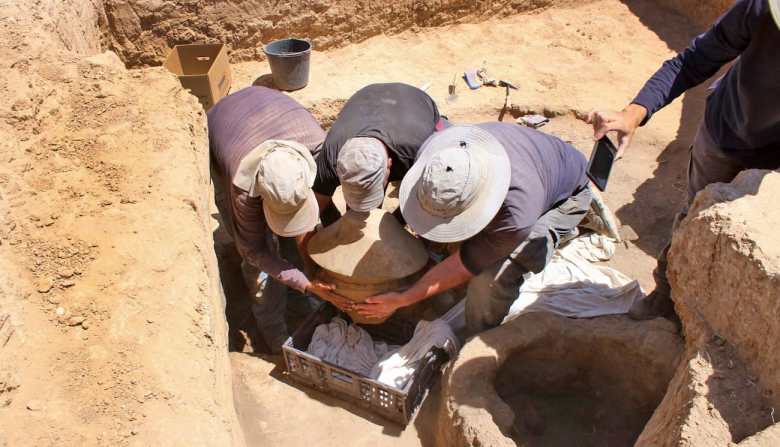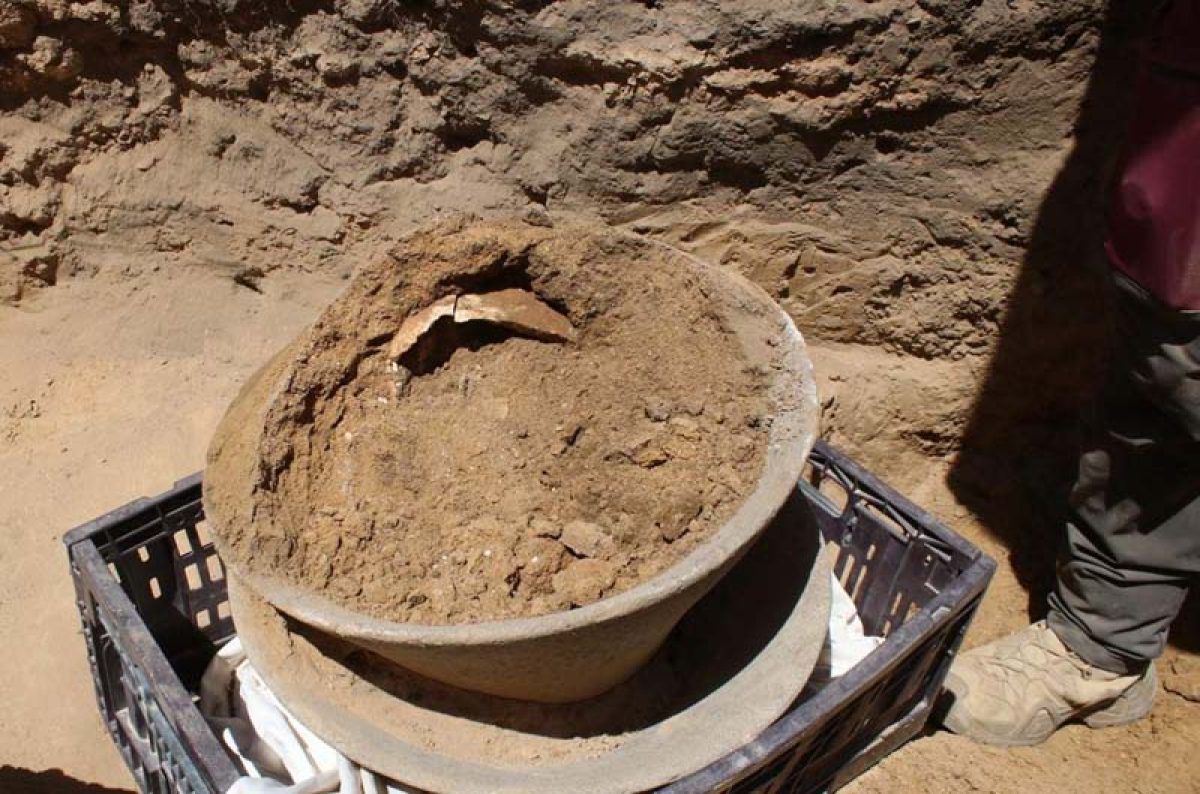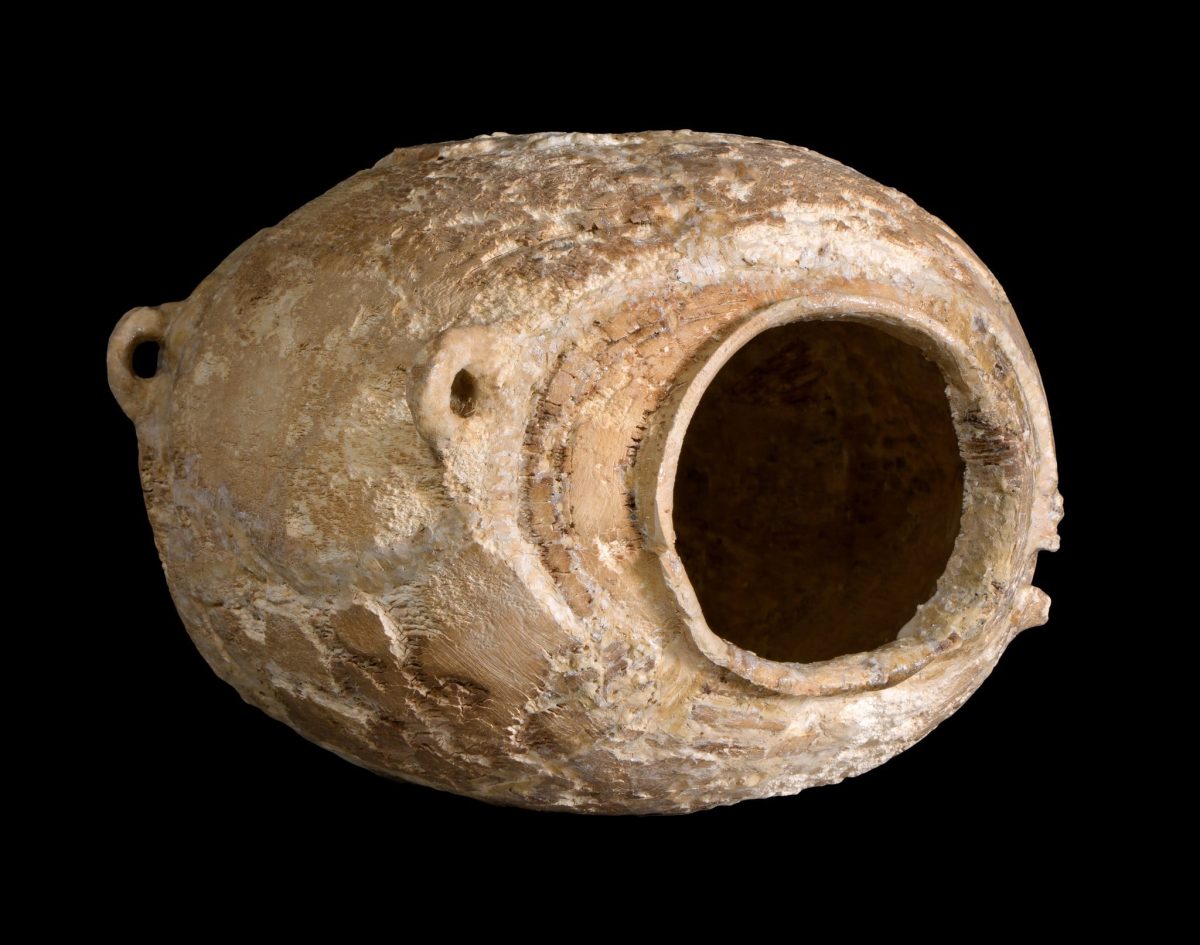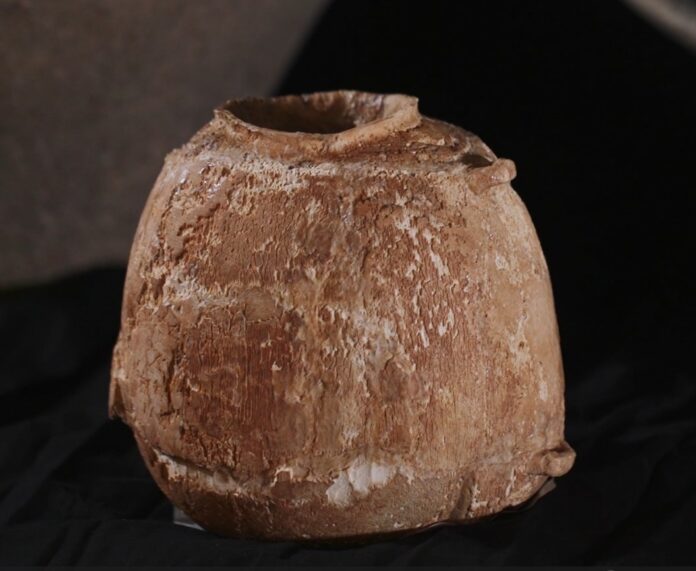In a remarkable archaeological find, Israeli experts have unearthed and meticulously restored a 6,000-year-old ivory vessel near Beersheba. This ancient artifact, shattered and ritually interred in antiquity, offers a fascinating glimpse into the Chalcolithic period. The restored vessel will be showcased to the public at the upcoming Jerusalem conference.
The Discovery
Israeli archaeologists from the Israel Antiquities Authority (IAA) have successfully reconstructed the vessel, which was originally crafted from elephant ivory. Found at the Horvat Raqiq site in 2020, this rare item was preserved within a basalt stone container for millennia. The excavation was part of infrastructure work to lay a water pipe in the area.
Chalcolithic Period Significance

The vessel dates back to the Chalcolithic period (4500-3500 BCE), a time marked by significant cultural developments, the advent of copper smelting, and the expansion of trade networks. This artifact is the first Chalcolithic ivory vessel discovered in Israel, believed to have been either imported from Egypt or carved locally from imported ivory. Known as an amphoriskos, the small jar provides insight into the advanced craftsmanship and cultural exchanges of the time.
Craftsmanship and Cultural Exchange

“The vessel deepens our understanding of the Chalcolithic period and the cultural exchange ties of our region with neighboring and distant cultures,” the researchers explained. The amphoriskos is well-crafted, utilizing the tusk to its maximum potential, highlighting the skill of the artisans who created it. The find at Horvat Raqiq, an ancient settlement also associated with the later Nabatean culture, underscores the site’s historical significance.
Uncovering the Vessel

IAA photographer Emil Aladjem first spotted the artifact during a final survey before the infrastructure work. The team unearthed a Russian doll configuration of three large vessels, with the ivory vessel pieces found inside the innermost container. The careful and deliberate interment of the shattered ivory vessel suggests it was part of cultic ceremonial activities.
Restoration and Presentation

Restoring the vessel was a complex process involving IAA researchers, Hebrew University experts, and ivory conservation specialist Olga Negnevitsky. Dr. Ianir Milevski, former head of the IAA’s prehistoric branch, described the vessel as “gorgeous and exceptional in its design,” noting its symmetrical side handles and overall craftsmanship.
Conclusion
The 6,000-year-old ivory vessel, now expertly restored, will be presented to the public at the Israel Prehistoric Society conference in Jerusalem. This extraordinary artifact not only showcases ancient craftsmanship but also provides valuable insights into the cultural and ceremonial practices of the Chalcolithic period. The discovery is a testament to the rich and complex history of human development in the region.
